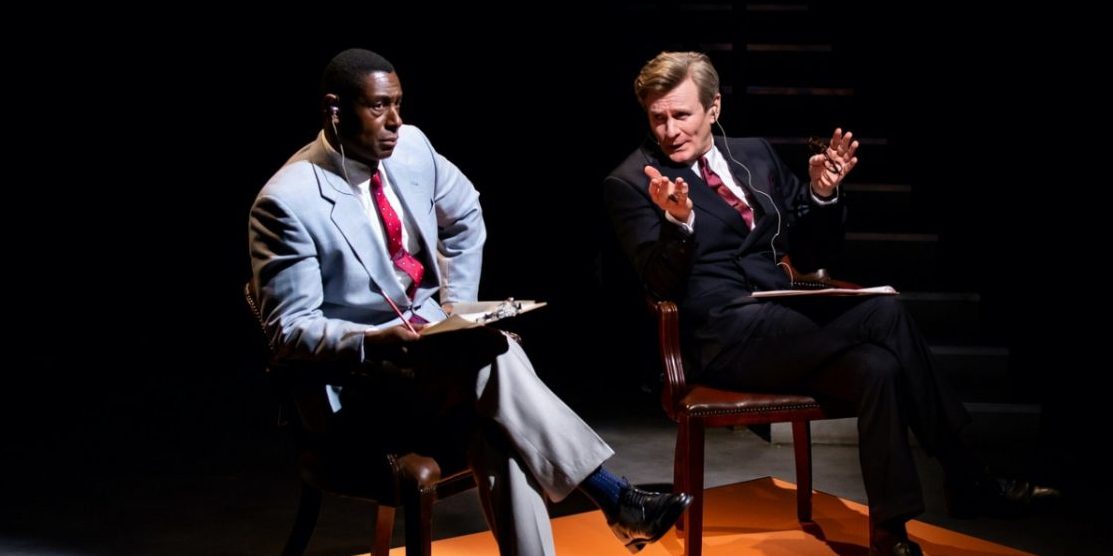James Graham and Jeremy Herrin have joined forces in order to offer audiences a very exciting – and thought-provoking- evening. Indeed, Graham’s new play is a rollercoaster of emotions: fast pace, witty dialogue, multiple locations, and two incredibly powerful main characters.
Charles Edwards as Gore Vidal and David Harewood as William F. Buckley Jr are, indeed, admirable. For approximately 2 hours they engage in endless political debates, and in, honestly, great performances.
Inspired by the documentary by Morgan Neville and Robert Gordon, James Graham has written yet another great political play. This time set in the 60s in American. As two men fight to become the next President, the conservative William F. Buckley is entering on a political TV battle with liberal Gore Vidal. Their confrontations are polemic and fierce – and a real joy from a theatregoer’s perspective. They do keep you at the end of your seat! They are, indeed, the very best of enemies. Graham’s new play depicts this turbulent political climate in the US in the late 1960s, which was intensified by the Vietnam War and the public protesting against it. Indeed the production transports us straight to what it would have felt like being in the US at the time – by showing real footage too – from the demonstrations and the upheaval.
The year of 1968 signified a transition period in both a political and a social sense. And the heated debated of the two “enemies” encapsulate this exact state of flux.
Bunny Christie’s intimate set design – using the Young Vic in one of its most effective configurations – as well as the colourful and tasteful costume design, transport the audience to one of the most heated TV debates of all times.
Charles Edwards and David Harewood are supported by a great ensemble of actors. More specifically, Margo Cargill, Emilio Doorgasingh, Clare Foster, Tom Godwin, John Hodgkinson, Justina Kehinde, Syrus Lowe, Kevin McMonagle and Sam Otto all deserve a mention. The production moves at a fast pace – achieving a graceful fluidity between different scenes and multiple locations.
The lighting design by Paule Constable as well as the sound design by Tom Gibbons and music by Benjamin Like Halls are excellent in achieving seamlessly these transitions and in creating an atmosphere which is both fun and solemn. The video design by Luke Halls provides a great bridge between the past and the present. By projecting real footage from the historic people and the events discussed in the play, the production often resembles a documentary/verbatim piece.
Overall, the play feels – strangely or not – extremely relevant. Perhaps the biggest question one walks out with is, how should two political figures debate against each other. How can this clash of political ideals be most effective and fruitful – without being offensive to one another.
There is a lot going on, and the production is no small feat. It is very rich in stimuli and quite overwhelming at times. One certainly needs time and space to reflect on all the things one saw/heard.

